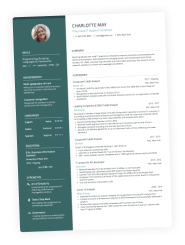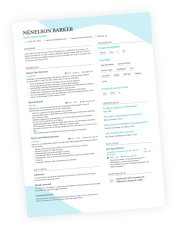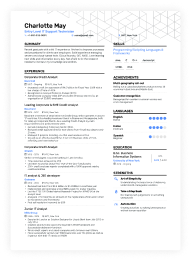No matter how many times you have done it already, you might still find it difficult to start your CV strong.
And whether you are applying for your first job, or taking on a career change, starting a brand-new CV is always hard.
There might be millions of questions in your head about how to start your CV just right.
We are here to solve your problem, and help you start, and do it strong.
In this article, we are going to explore the following questions:
- Why is it important to start your CV strong?
- How to start your CV strong?
And once we are done, you will be able to start your CV just right with ease.
So, if you are ready, let’s begin our journey.
Is your resume good enough?
Drop your CV here or choose a file. PDF & DOCX only. Max 2MB file size.
Why is it important to start your CV strong?
Before we go any further, you need to first understand why is it critical to start your CV strong.
Your CV is your first introduction to your potential employer, and as any first impression, you would want to make it a good one.
It is your best chance to present yourself as a valuable asset, and show that you are just the person they have been looking for.
By planning your CV carefully and starting it strong, you can increase your chances of getting an interview.
However, not taking the time to plan it ahead, might result in the exact opposite.
How to start your CV strong?
Now that you understand the importance of how you start your CV, it is time to figure out how to get the best out of it.
You can start your CV strong in just a few simple steps.
Get all your information in one place
To start your CV strong, you should not begin with a blank piece of paper.
What you need to do is actually start digging up all the information you might need for your CV.
Think about all the essential things your CV should include, like:
- Your dates of employment for each position you have held
- Relevant job duties in past positions
- Skills you have acquired
- Certifications
- Education
Once you have all that ready, it would be easier for you to pick the right format for your CV, choose the best font, and figure out all the little details around your formatting.
Choose your CV format
Once you have gathered all the information you need, it is time to pick the right CV format for you.
It all depends on how much experience you have, the industry you are applying for, and what other specific information would be expected from you.
The most common CV formats are:
- Chronological CV – this is the most common CV format. All you need for it is focus on your work experience, and list it in reverse-chronological order. It is widely preferred by recruiters, as it is straightforward, and easy to scan.
- Functional CV – this CV format is preferred mainly when you are still inexperienced, or taking up a new career path. Its main focus falls on your skills set, rather than your work experience.
- Hybrid CV – this CV format takes the best features from the other two formats. It still puts an accent on your skills set, but it also focuses on your career, which should again be listed in reverse-chronological order.
Pick the right formatting for your CV
The last thing you need to take care of before you start writing your CV is the formatting.
As it would be one of the first things the recruiter would notice, make sure you have:
- Selected a professional font – like Times New Roman, Arial, or Calibri
- Selected proper font size – you should stick between 10 and 12
- Kept some white space on the paper, so that the page can breathe, and does not look too cluttered
Create the perfect header
Once you are ready to start to craft your CV, you should begin from the very top of the page – your CV header.
The first thing you need to keep in mind for your CV header is that you need to keep it consistent across your application documents. For example, if you plan on writing a cover letter as well, make sure it uses the same header as your CV.
The next thing you need to do is to design your header to show your personality, but also make sure it matches the industry standards for the field you are applying for.
Your CV header should include:
- Your name
- Your phone number
- Your email address
To get the best results, you need to follow these steps:
- Make your name stand out, so that the recruiter clearly knows whose CV they are looking at
- Make sure your email address looks professional. If needed, you can create a new one with the sole purpose of job-seeking
Write your CV introduction
When you are ready with your CV header, it is time to grab the recruiter’s attention.
Writing a good CV introduction can really help you stand out from the crowd of applicants, as it will make the recruiter remember you, and increase your chances of getting an interview.
The format of your introduction can vary on multiple factors, like qualifications, experience, and industry.
The three most common formats for a CV introduction are:
- Career objective – in that case, your introduction would be a short paragraph, where you discuss the career path you are seeking, and what you hope to gain from the open position. Also, don’t miss out on highlighting your relevant skills and experience
- CV summary – with that introduction format, you would focus more deeply on your relevant experience, skills, certifications, and qualifications. However, don’t forget to keep it short, just like you would with the career objective
- Professional profile – this introduction format is best if you have lots of experience behind you. It focuses mainly on your work experience, and career achievements
Use keywords
Last, but not least, make sure you use keywords right from the start when crafting your CV.
Since more and more companies are using Applicant Tracking Systems (ATS) to do the pre-selection of candidates for them based on keywords, you would want to list any skills you possess, and are listed in the job posting.
This way, you can ensure that you would pass the ATS test, and your CV would meet the eyes of the hiring manager.
Takeaways
We are all done, now you know how to start your CV strong.
Let’s go through all the important steps you need to take to ensure that:
- Get all your information in one place – take the time to collect all the information you might want to put on your CV, as this would help you determine its format better
- Choose your CV format – you can do that based on the information you gathered. It is best if you stick to one of the three most common formats – chronological CV, functional CV, and hybrid CV
- Pick the right formatting for your CV – you would want the recruiter to be able to read your CV with ease, so make sure you keep a consistent and professional formatting right from the start
- Create the perfect header – include all the necessary information, like your name, phone number, and email address
- Write your CV introduction – grab the recruiter’s attention right from the start by showing them you are the right person for the job. It’s best if you stick to the three main formats for a CV introduction – career objective, CV summary, and professional profile
- Use keywords – finally, make sure you use keywords throughout your CV, as there is a great chance that the pre-selection would be done my an ATS
Now that you know all that, you are ready to start crafting your new CV, and start it strong.



